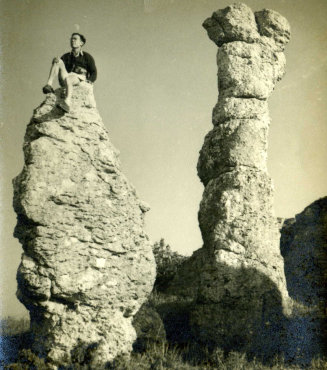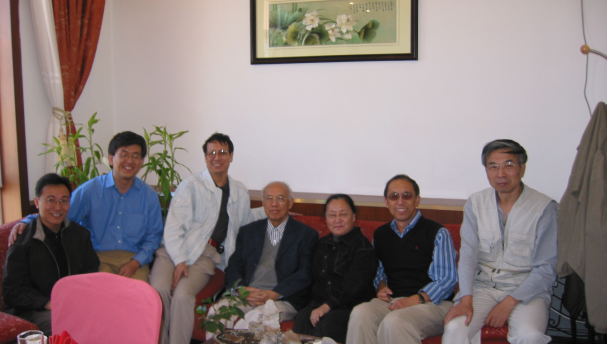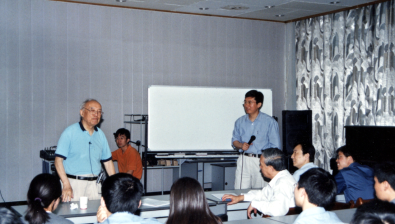
KUO Kehsin
KUO Kehsin was born in August 1923 in Beijing. He joined the army during his university years.
After graduating from the Department of Chemical Engineering of Zhejiang University in 1946, KUO was admitted to the Royal Institute of Technology in Sweden to study metallography. In 1951, KUO came to Uppsala University to carry out the research on X-ray metallography, where he discovered a new structure of MoC (Nature, 1952); found the carbides in high-speed steel with red hardness-W2C; discovered a variety of alloying carbides; discovered new phases with a b-Mn structure; and studied the alloying laws of sigma phase and Laves phase generation, etc.
At the same time of the fruitful results of x-ray metallographic research, KUO was interested in electron microscopy. In 1954, KUO returned to the Royal Institute of Technology in Sweden, where, in addition to the study of carbide precipitation, he also studied the transformation of δ-ferrite, δ-γ (austenite) + M6C or Laves/sigma phases.

KUO Kehsin in Sweden
In late November 1955, KUO went to the Royal Institute of Technology (RIT) in Delft, Holland, to study the phase transition from white to gray tin with Professor W. G. Burgers, and in March 1956, under Premier Zhou's proposition of "marching towards science," KUO returned to China at the end of April, after a nine-year absence.
In 1956, after his return to China, KUO chose to work in the Institute of Metal Research (IMR) as the director of the Metal Physics Laboratory, and also the head of the Metal Ceramics 207 Group, and the deputy head of the High Temperature Alloys Group. In 1958, IMR set up 10 research laboratories, and KUO was appointed as the director of the Seventh Laboratory. In 1961, the Second Research Laboratory was set up under the name of "Alloy Structure", and KUO was the director. In 1961, the second research laboratory was organized under the name of "Alloy Structure", and KUO was appointed as the director. In the early 1960s, he was the provost of the Institute of Metals, teaching specialized courses and lectures such as "X-ray crystallography".
In 1956, China conducted postgraduate training on a trial basis in several universities and institutes of Chinese Academy of Sciences. Until 2006, KUO Kehsin trained 119 postgraduates and three academicians, YE Hengqiang, ZHANG Ze, and WAN Lijun.

Group photo of KUO Kehsin and his students
KUO's research on quasicrystals has been the representative work of his academic career. The group led by him discovered six new phases and various domain structures in the study of new phases and domain structures of tetrahedral dense stacked phases, breaking the stagnation in this field for more than 20 years. This finding also led to the discovery of five symmetric diffraction phenomena and the existence of quasicrystals in fast-cooling nickel-titanium-vanadium alloys. The research team under his leadership also achieved a series of results in minerals, catalysts, initial oxidation of metals, and crystallized substable phases of amorphous alloys.
KUO's outstanding scientific achievements have earned him the First Prize of the Chinese Natural Science Award (1987), the Physics Prize of the Third World Academy of Sciences (1993), and the Ho Leung Ho Lee Prize for Scientific and Technological Progress in Physics (1994). He was co-opted as a member of the Academic Department of the Chinese Academy of Sciences in 1980, an honorary doctor of technical sciences at the Royal Institute of Technology, Sweden, a foreign member of the Royal Swedish Academy of Engineering Sciences, a foreign member of the Royal Institute of Geography, Lund, Sweden, in 1990, an honorary member of the Japan Society for Metals, and an honorary member of the Materials Society of India, in 1991.
KUO Kehsin's scientific achievements and noble character has earned him the respect of the international scientific community. 2007 marked the 25th anniversary of the discovery of quasicrystalline structures, and to commemorate this important discovery in the fields of crystallography and materials science, the International Quasicrystalline Conference was arranged to be held in Tel Aviv, Israel, which is the hometown of the discoverer of the icosahedral quasicrystal, Danny Shechtman. A presentation in honor of KUO was held at the conference. In late 2011, Shechtman who discovered quasicrystals, cited KUO's contributions to quasicrystal research in his Nobel Laureate Dinner speech.
KUO Kehsin was pragmatic and truth-seeking in the research career, and had a broad vision. He timely selected the right direction of research, leading China's electron microscopy community to the world. His research team also ascended to the peak of the quasi-crystalline research. He was very effective in cultivating talents, and has treated his students with enthusiasm and sincerity. His dedication to science is a valuable asset.

Academician KUO Kehsin gives a Lecture in IMR